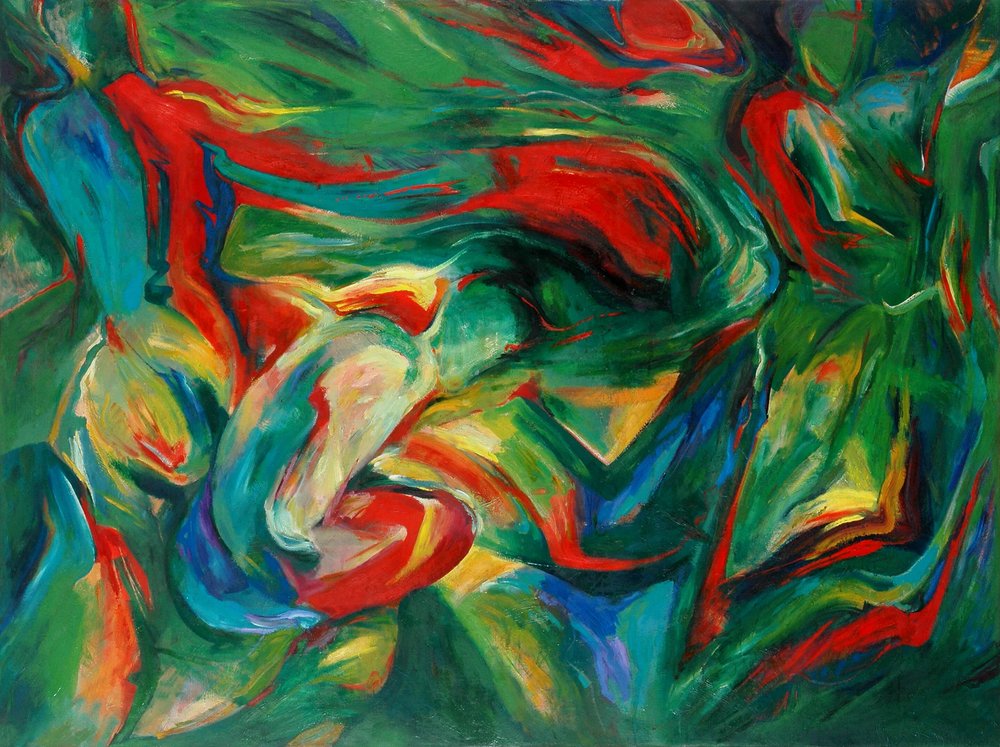
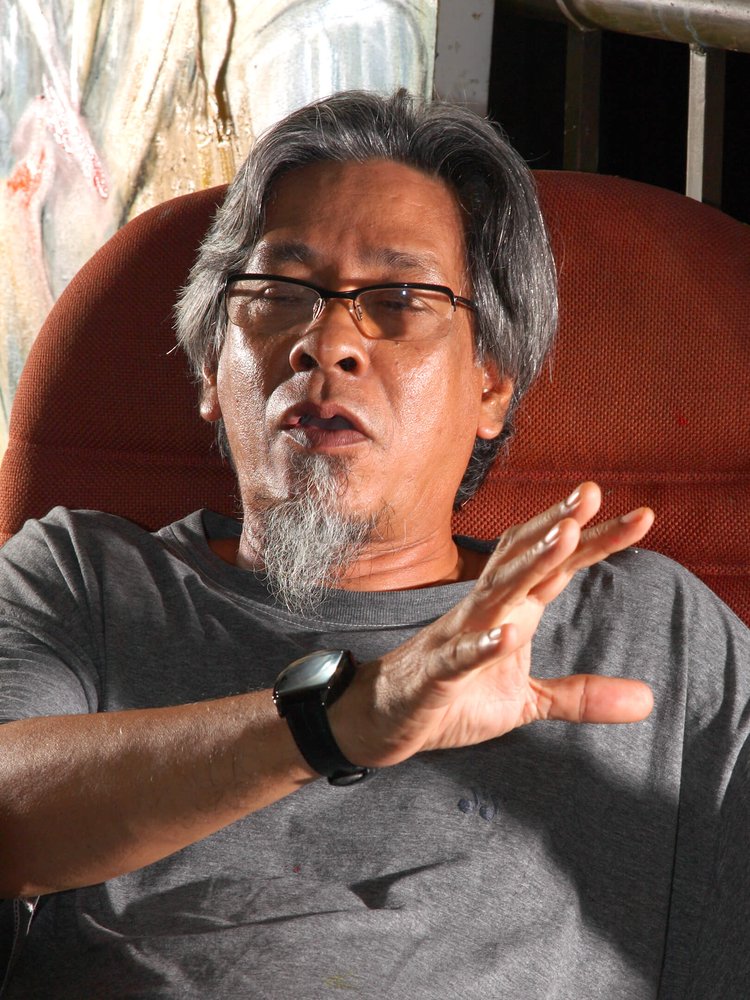
Yusof Ghani
Year of birth: 1950
Origin: Johor, Malaysia
About the artist
Yusof Ghani began working life as a graphic designer (1969-79) before furthering his education on a government grant to the United States of America. The undergraduate’s interest in the fine arts was awakened there, when he took painting as an elective subject. Yusof recalls being in awe of painting’s multiple evocations. Coupled with strong encouragement from his professor in painting, Walter Kravitz, the artist made the pivotal decision to shift disciplines.
His seminal Tari series began while he was pursuing his postgraduate studies in Washington DC. The earliest manifestations of the subject can be seen in the artist’s watercolour study from 1981, which features rudimentary examinations of the human form. Further studies display experimentation in other mediums, such as pastels and prints, and evince the various stages of production. The artist transfers the outline of these compositions on the finished works that capture movement and vibrancy through expressive brushstrokes.
Tari is the artist’s most exhaustive series. He explored the theme for a decade, from 1984. Developments between the various cycles of Tari can be seen chronologically: from thicker brushstrokes in Siri Tari III (1984) to almost sketch-like figures and larger, more ambiguous space in the fifth cycle of 1989.
The choice of dance as his definitive subject matter entails a number of reasons: among them, dance can be a metaphor for the artist’s identity as a Malaysian abroad, but it is also a denominator of universal culture. Coupled with abstraction, and certainly the popularity of Abstract Expressionism, Yusof Ghani has a formula in the Tari series that could connect with almost everyone.
The inclusiveness carries through as well in subsequent series that are also linked to performance: Topeng (1992-1998/9) and Wayang (1997-1999). The former was based on Kenyah and Kayan tribe ritual masks, whilst a book on the history of puppetry influenced the latter.
The underlying themes are reflections on society; class imbalance is tackled in Tari, whilst the highly primitive Topeng works (that visually recall the paintings of Willem de Kooning [1904-1997]) suggest the guises worn to mask the true self.
Yusof Ghani next embarked on the topic of nature. The series Hijau (beginning c.1998) consists of paintings that can be seen as abstract landscapes. These are influenced by an encounter the artist had in Sarawak; the sight of felled logs by a riverbank brought home the reality of the rape of Nature. The series do not comment directly on this matter. The works on nature’s beauty, however, remind viewers of the need to be eco-sensitive and safeguard the environment.
Bukit Bendera (2001), a later work from the series, is an example and, whilst non-representational, conveys the unseen qualities of the site in Penang. Yusof Ghani’s responsiveness to social issues can be traced to his Protest series of the 1980s, when he joined a radical group of Washington-based artists that produced an exhibition in objection to American intervention in Nicaragua.
The beginning of the Noughties saw Yusof Ghani return to abstract figurations. Works, such as Fishmonger (2003) or Goldminer (2003), are from the Segerak series. His palette concentrates on more reductive compositions, such as the black and white Nightwalkers II (2005) or the brown-stained Bodyguard (2006). An abundance of human figures - athletic and agilely outlined - is related to his travels.
In countries such as China, India, and South Africa, the artist observed striking commonalities (greed, politics, and other venal traits) that reflect the dissolution of global barriers. Segerak, or in unison, is testament to this 21st century predicament. The cockfighting series Biring (2006-07) delivers a different charge from former works. The artist’s medium has become fluid with paint drips and the ‘semangat’ or spirit of the battle is expressed in the long, curvaceous lines.
Education
1983Master Of Fine Art
Catholic University Of America United States of America
1981Bachelor Of Fine Art
George Mason University United States of America
Artworks
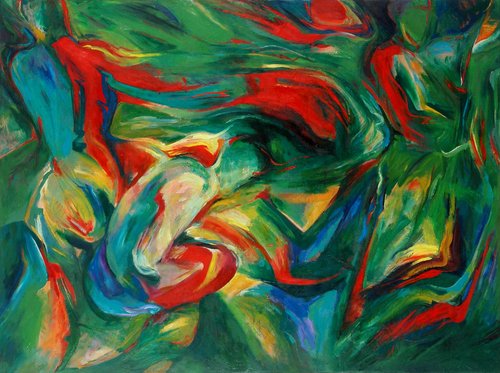
III (1984)
Yusof Ghani
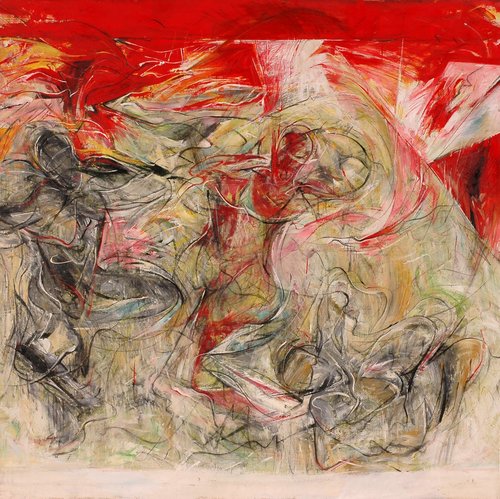
VI (1989)
Yusof Ghani
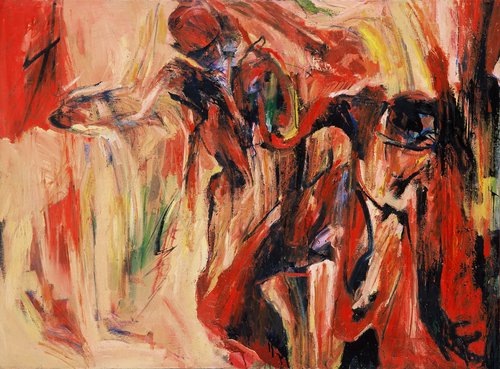
IV (1988)
Yusof Ghani
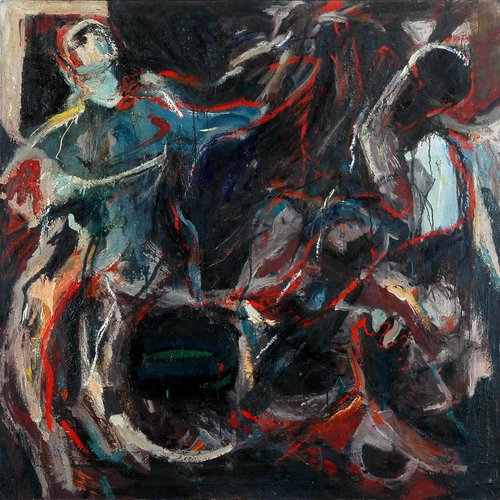
V (1988)
Yusof Ghani
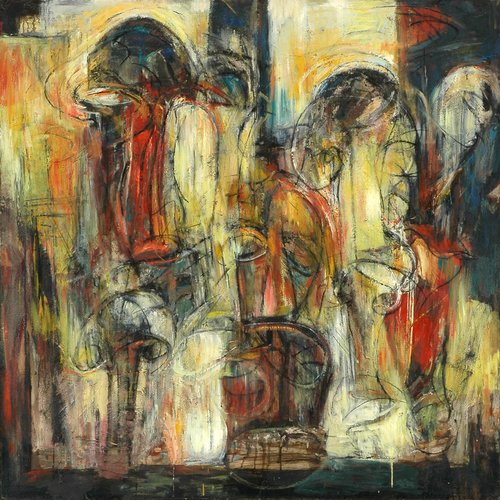
Protes Kenyalang (1991)
Yusof Ghani
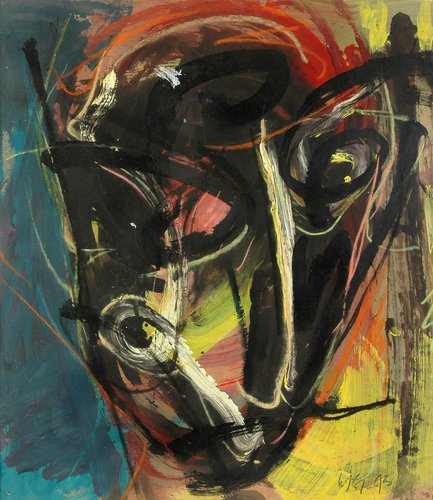
Kanya (1993)
Yusof Ghani
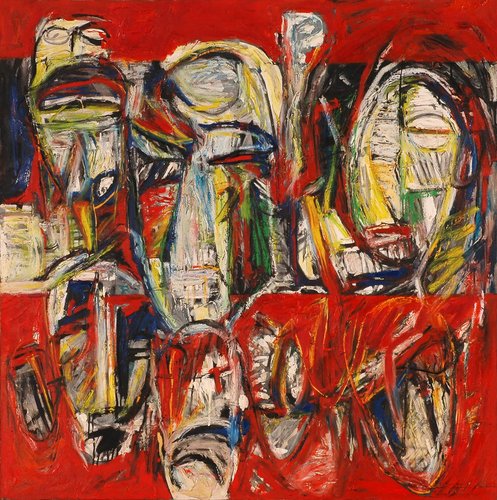
Juragan (1995)
Yusof Ghani
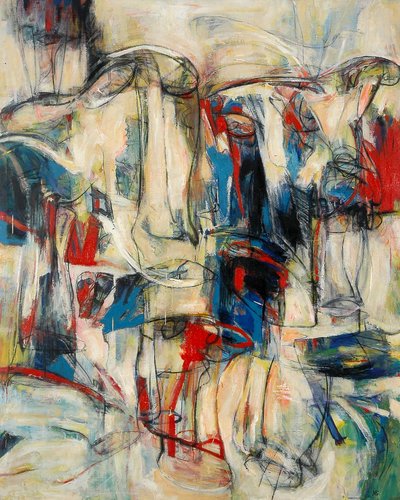
Gawain Kenyalang Alam III (1996)
Yusof Ghani
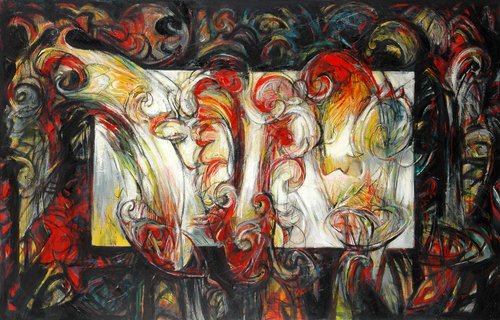
Impian Jugra (1996)
Yusof Ghani
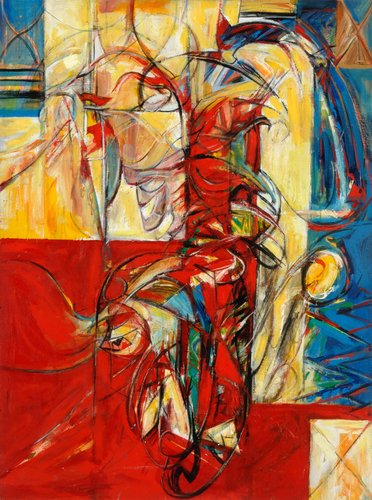
Ketulan II (1998)
Yusof Ghani
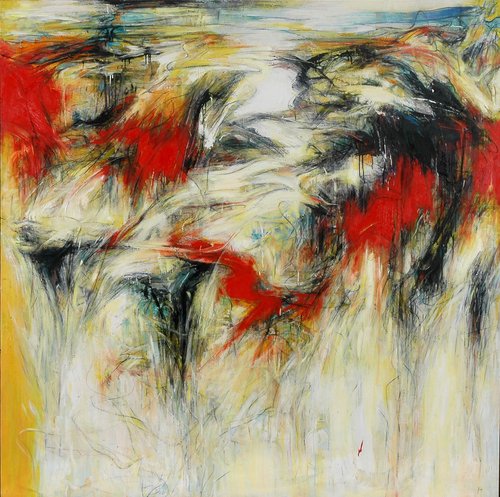
Bukit Indera (2001)
Yusof Ghani
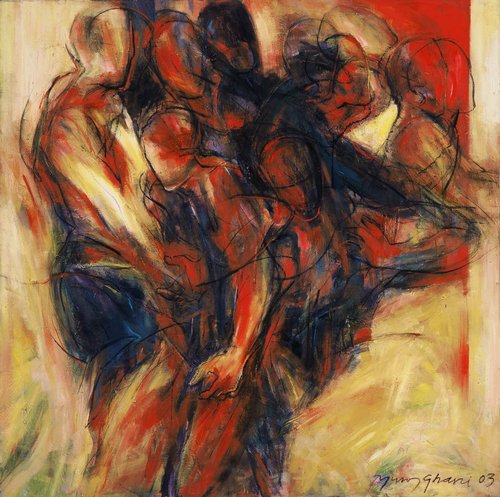
Fishmonger (2003)
Yusof Ghani
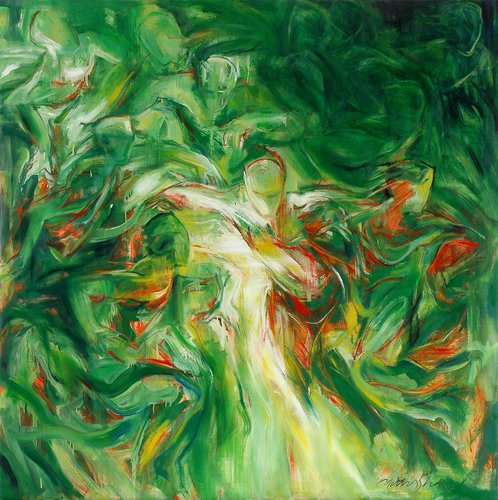
Emerging (2005)
Yusof Ghani
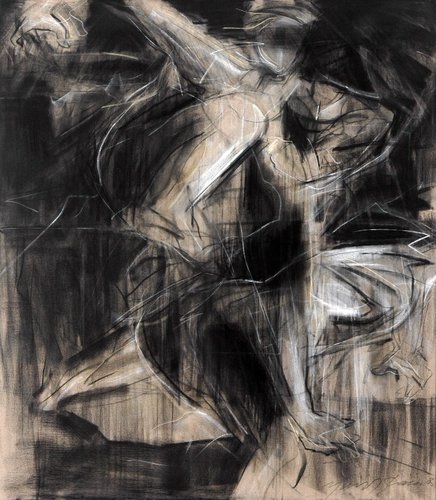
Nightwalkers II (2005)
Yusof Ghani
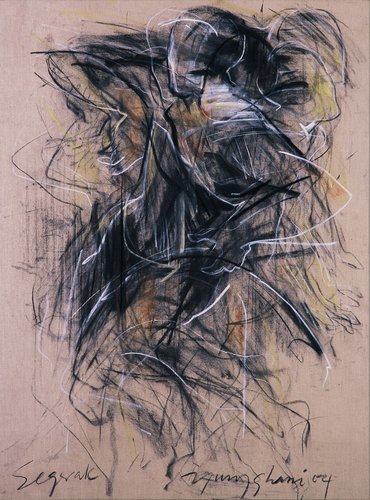
Pursuit No 5 (2004)
Yusof Ghani
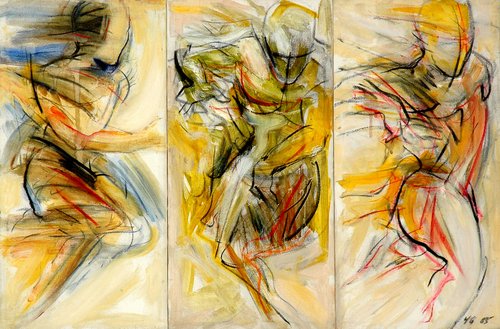
Working Drawing 6 (2005)
Yusof Ghani
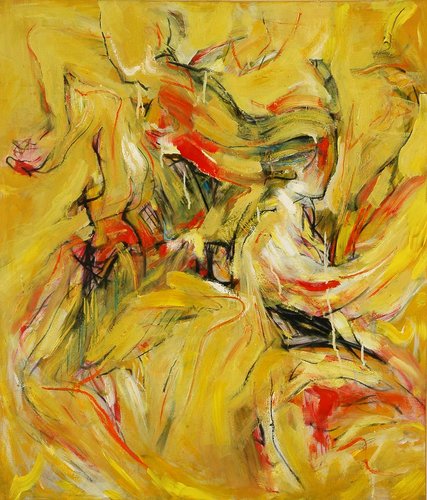
Evolved (2005)
Yusof Ghani
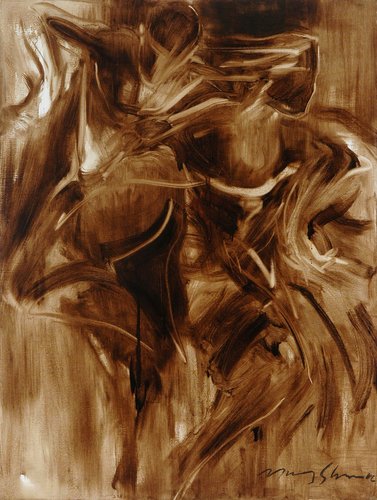
Bodyguard (2006)
Yusof Ghani
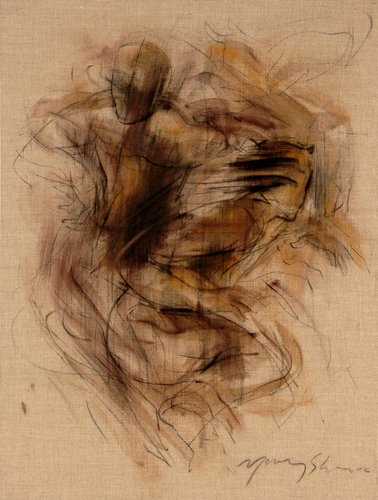
Players (2006)
Yusof Ghani
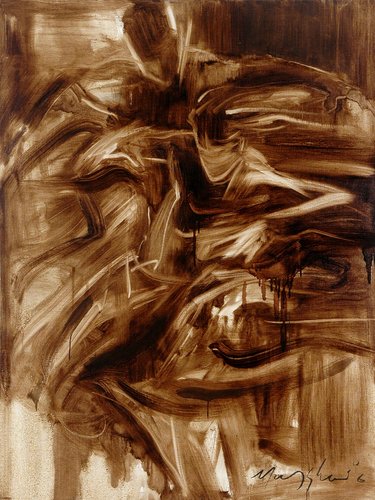
Breakthrough (2006)
Yusof Ghani
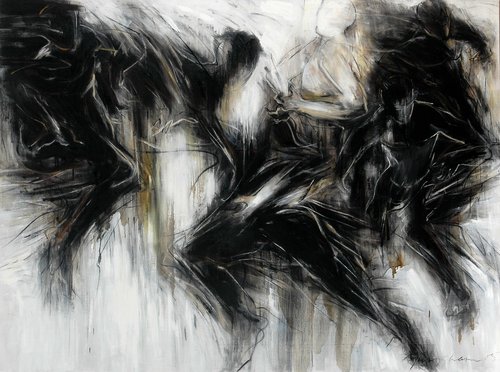
Searching (2005)
Yusof Ghani
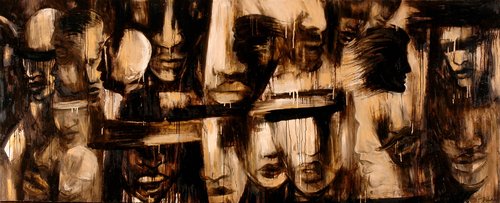
Roots (2006)
Yusof Ghani
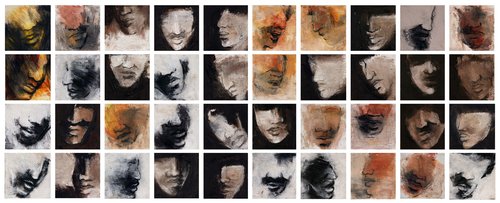
Entourage II (2006)
Yusof Ghani
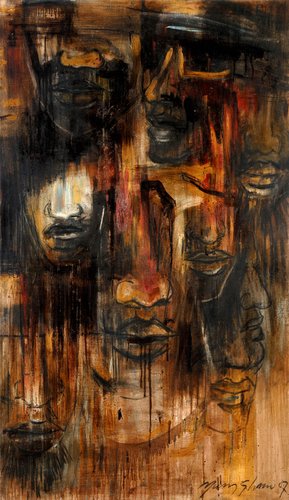
Candidates (2007)
Yusof Ghani
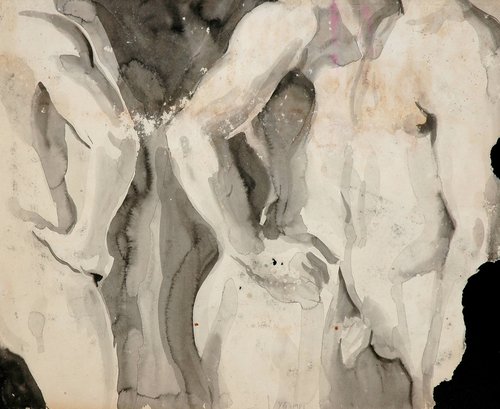
Figure Study 1 (1981)
Yusof Ghani
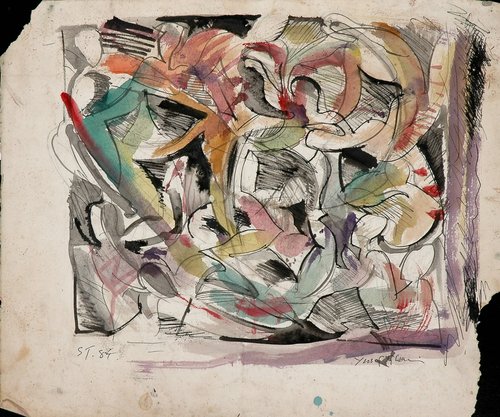
Tari Study 1 (1984)
Yusof Ghani
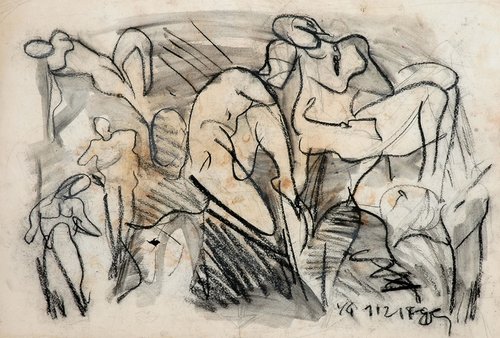
Tari Study II (1989)
Yusof Ghani
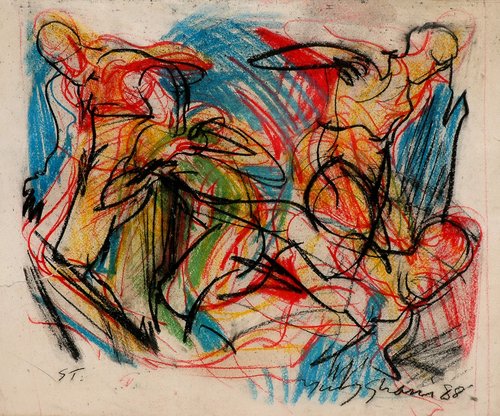
Tari Study III (1988)
Yusof Ghani
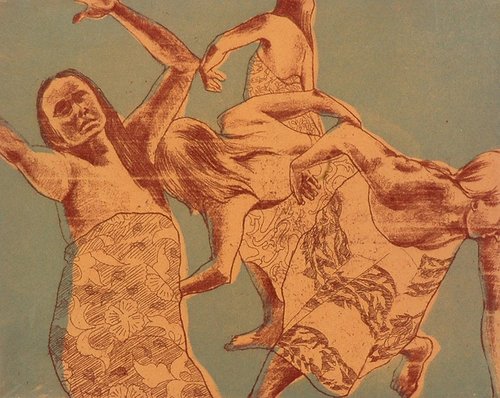
Artist Print 1 (1981)
Yusof Ghani
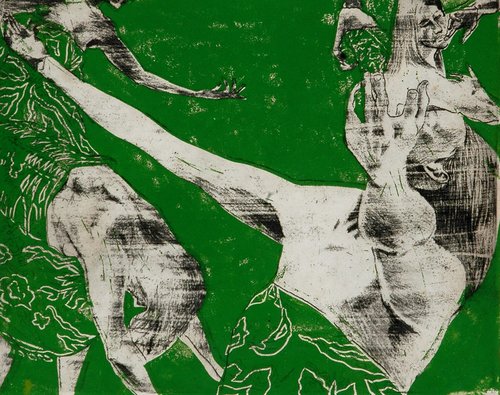
Artist Print 2 (1981)
Yusof Ghani
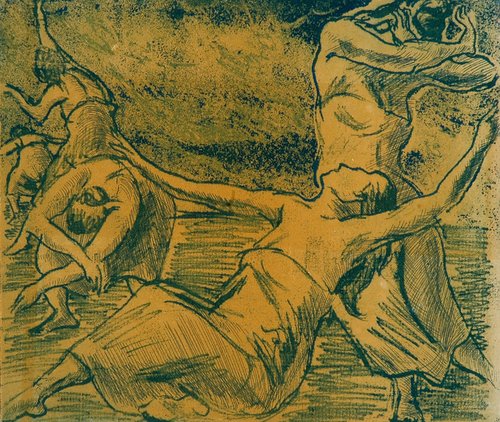
Artist Print 3 (1981)
Yusof Ghani
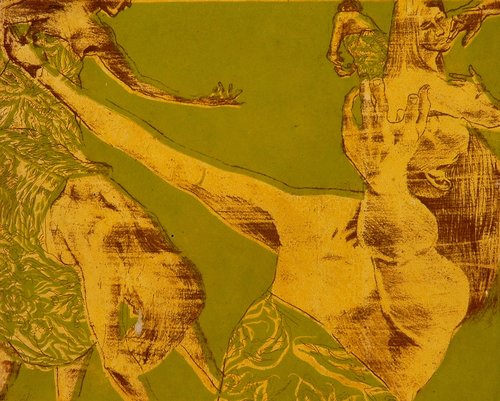
Artist Print 4 (1981)
Yusof Ghani
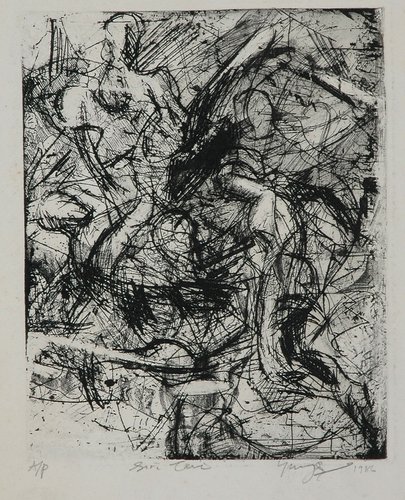
Siri Tari 5 Of 20 (1986)
Yusof Ghani
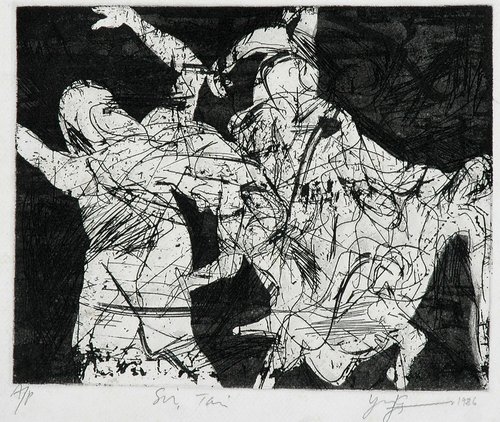
Siri Tari 7 Of 20 (1986)
Yusof Ghani
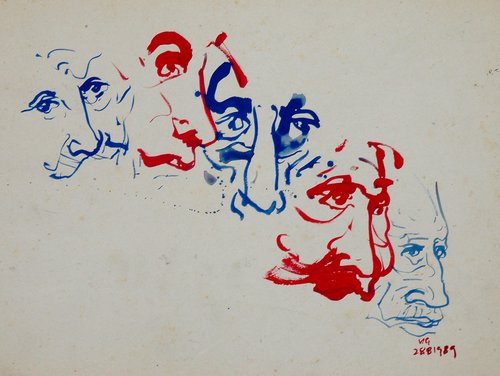
Study 1 (1989)
Yusof Ghani
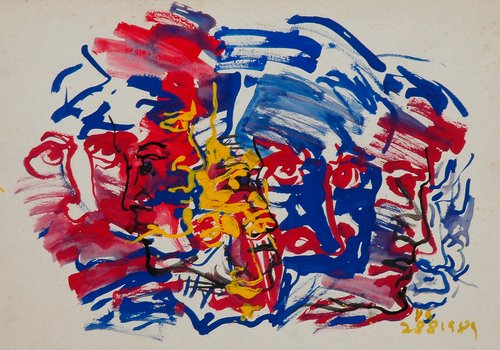
Study 2 (1989)
Yusof Ghani
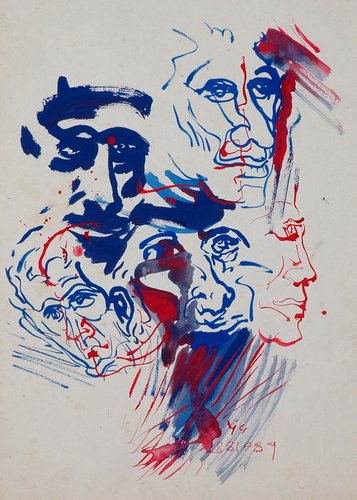
Study 3 (1989)
Yusof Ghani
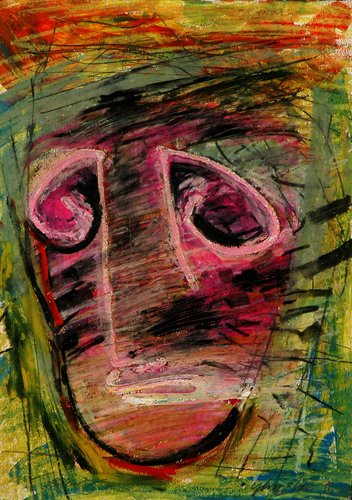
Bau (1996)
Yusof Ghani
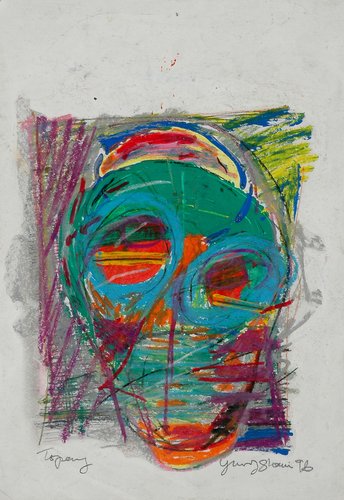
The Green Man (1996)
Yusof Ghani
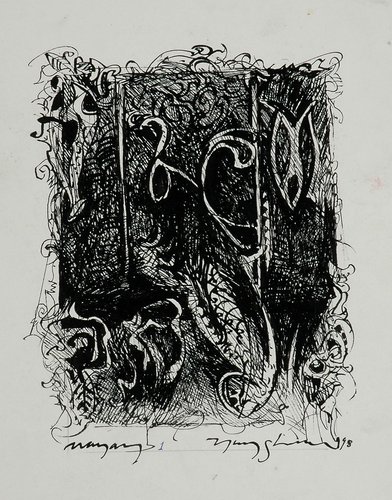
Rama 1 (1998)
Yusof Ghani
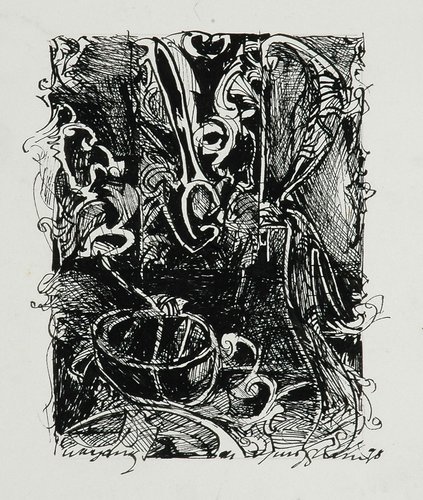
Rama 2 (1998)
Yusof Ghani
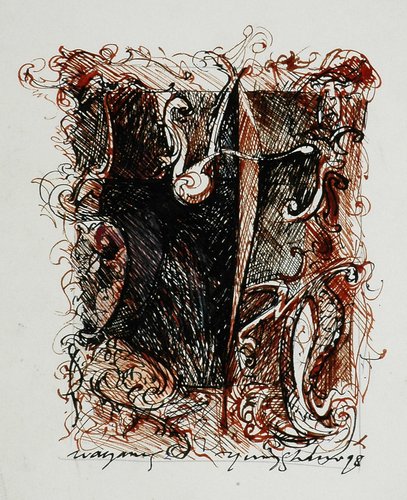
Rama 3 (1998)
Yusof Ghani
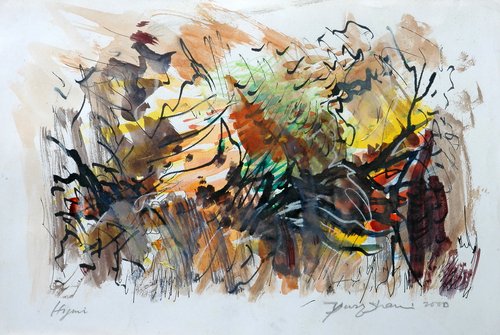
Tasik Kenyir (2000)
Yusof Ghani
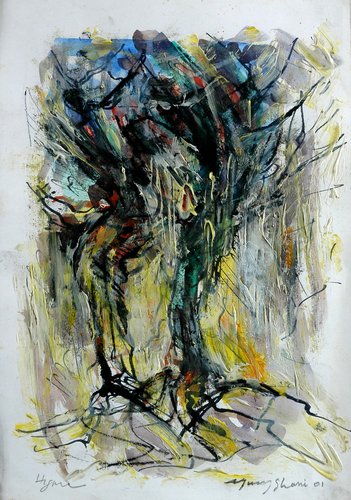
Serkat (2000)
Yusof Ghani
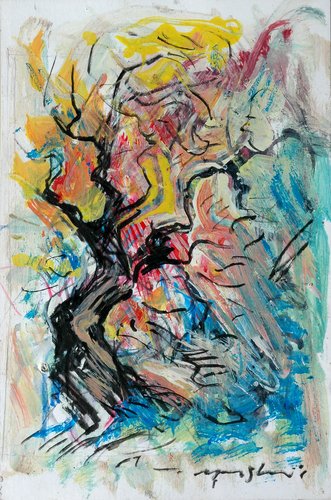
Sanglang (2001)
Yusof Ghani

The Soldier Sketch (2004)
Yusof Ghani
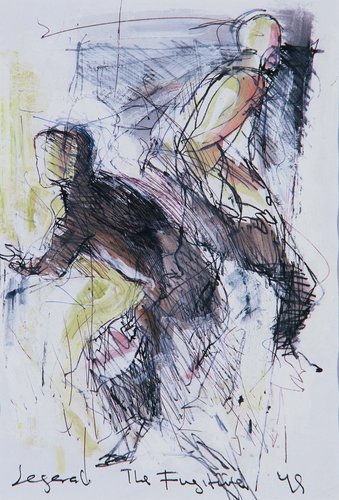
The Fugitive Sketch (2004)
Yusof Ghani
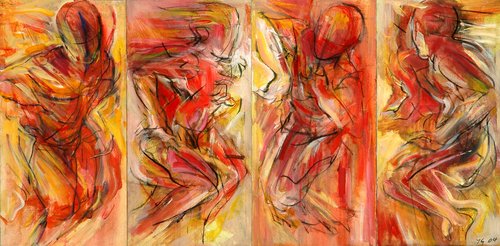
Working Drawing 4 (2004)
Yusof Ghani
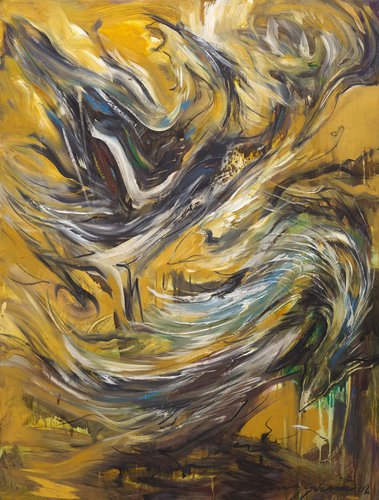
XVI (2006)
Yusof Ghani
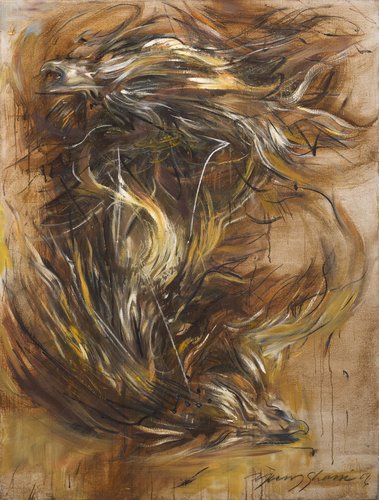
XXVIII (2006)
Yusof Ghani
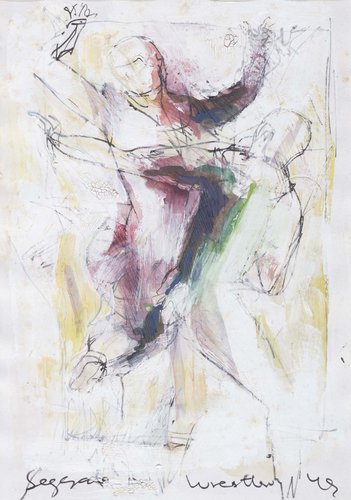
The Wrestler Sketch (2004)
Yusof Ghani
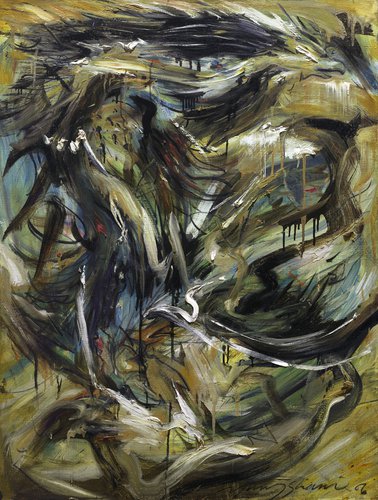
XI (2006)
Yusof Ghani